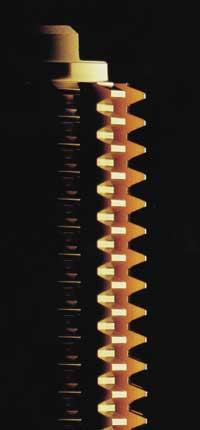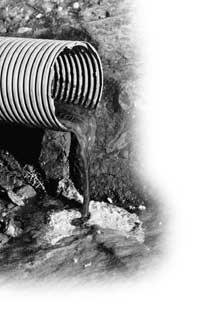Electrolytic coatings (and IV): wastewater treatment
1999/08/01 Etxaide, Maider Iturria: Elhuyar aldizkaria
Wastewater treatment operations: desoxication, metal precipitation and decanting/filtering
The
most important destoxication reactions are the reduction of chromium VI and the oxidation of cyanides.
Chromium VI is very toxic and soluble in acid and basic pH. Its reduction process is very fast and together with the destoxication it is possible to precipitate also insoluble chromium (III).
The oxidation of cyanides depends on their degree of dissociation, since in the reaction only free cyanide is eliminated. For this reason, very stable cyanurous complexes such as ferrocyanates are difficult to oxidize. Complexes prone to dissociation, such as zinc and cadmium, are easier to remove. When cyanide oxidation is performed with NaOCl, there is a risk of forming chlorinated organic compounds. To avoid this, we must minimize the content of organic matter.
The precipitation process of metals consists of its solubility according to the pH of dissolution. In fact, most heavy metals are soluble in acidic media and precipitate in alkaline media.
After previous processes the suspended particles must be concentrated by decanting. Flocculants that weaken the repulsion force between particles are often used to facilitate and streamline this procedure. When you want to further accelerate the process you can also use polyelectrolytes and organic coagulants. However, the use of adequate reaction times, and if the decanting time is relatively long, can reduce and even prevent the use of flocculants and coagulants.
Waste water treatment concepts
The physical-chemical treatment of the wastewater of electrolytic coatings, with respect to environmental safety, can be carried out in three different ways: discontinuous treatment, continuous treatment and semi-discontinuous treatment. Each of them includes the operations mentioned in the previous section.
Discontinuous treatment can correct possible operating defects, frequent in wastewater treatment plants. This type of treatment provides a homogeneous stay time for the total volume of stored water, so if an adequate reaction time is established, the operation will be successful. For the application of this treatment, wastewater will be collected previously in several tanks separated by its composition (cyanide water, chromic water, acid water and alkaline water). This type of treatment is not applicable when using large volumes of water, which would require department stores. Discontinuous treatment makes no sense, so if the washing quality criterion and cleaning technique have not been previously applied optimised and therefore the flow rates to be treated have not decreased significantly.
Continuous treatment presents greater operational risks as irregularities in the purification process (incomplete reactions, too low reaction time, accumulation of decanting stage, etc.) cannot be resolved abruptly. However, if the reaction tanks, in addition to being double, are placed in series, the decanting is correctly dimensioned and a double parameter control system is established, the risks can be reduced slightly. It should be noted that the Environmental Administrations of other European countries have prohibited the implementation of this treatment route in new factories or lines and force to strengthen security measures to those who are making significant investments.
Half of the treatment is performed between the previous two, treating the most toxic and complex wastewater, that is, the cyanide and chromic discontinuous and the rest continuously. This system guarantees environmental safety without having to maintain a minimum flow rate in all operations. In many of the lines currently operating it is impossible to optimize the cleaning technique, so this way is very suitable for these cases. Cyanide-free zinc lines that cannot reduce their wastewater, for example, are very suitable for the application of this pathway.
In general, it is best to apply discontinuous treatment in cases where possible, as it is the most advantageous. Continuous treatment, by optimising the cleaning technique and implementing washing quality criteria, will be limited to those lines and workshops that still retain large volumes of wastewater.
Some criteria to considerBefore the implementation
|

Gai honi buruzko eduki gehiago
Elhuyarrek garatutako teknologia






